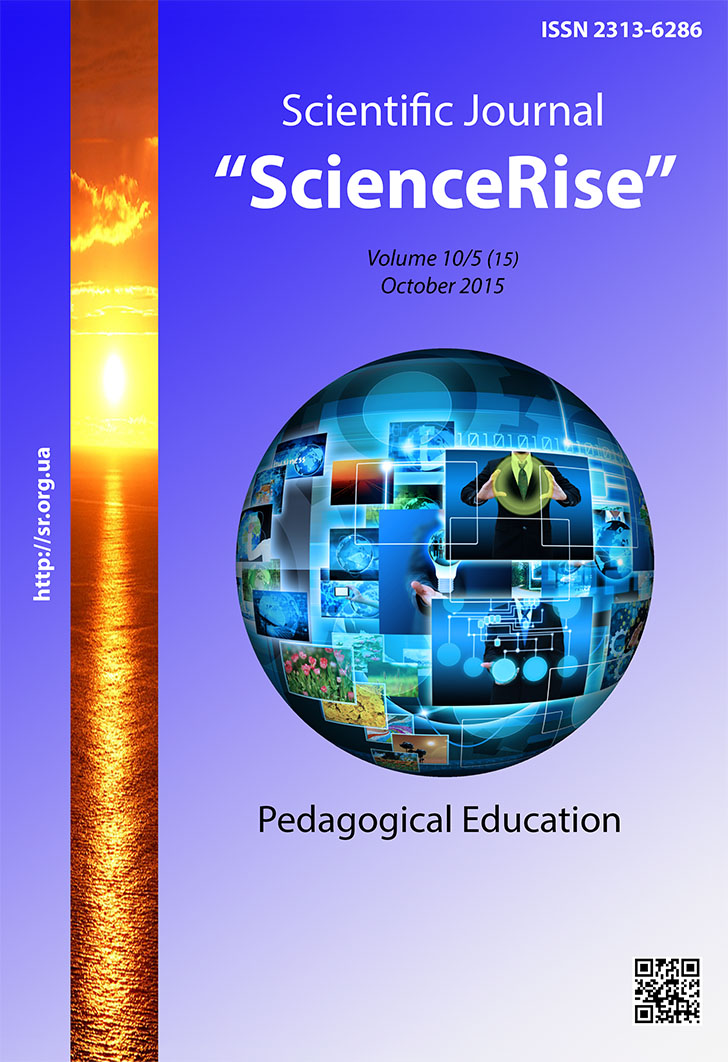Formation of performing competence of future music teachers
DOI:
https://doi.org/10.15587/2313-8416.2015.51968Keywords:
musical and performing competence, artistic and interpretative process, artistic and interpretative skills, technologyAbstract
It is conducted a theoretical analysis of psychological and pedagogical works on which makes it possible to state that at the present stage educational competency approach is a priority. Music and performing competence is identified as key in the structure of professional competence. The basic components of music and performing expertise include: value-motivational, cognitive-knowledge, operational and technological, self-creative. Artistic and performance skills are defined as internal system forming factors of musical and performing competenceReferences
Masol, L. M. (2006). Total artistic education: Theory and Practice. Kyiv, 432.
Andreev, A. L. (2005). Kompetentnostnaya paradigm in education: Experience philosophical and methodological analysis. Pedagogy, 4, 19–27.
Bibik, H. M., Vashchenko, L. S., Lokshina, O. I. et. al; Ovcharuk, A. V. (Ed.) (2004). Competence approach in modern education: international experience and Ukrainian prospects (Library of Educational Policy). Kyiv: "KIS", 112.
Pometun, A. (2005). Competence approach – a key landmark of modern education. Mother School, 1, 65–69.
Stratan-Artyshkova, T. B. (2014). Creative and performing training of future teachers of music: Theory and Practice. Kirovohrad: KSPU V. Vynnychenko, 440.
Bacyn, E. A. (1985). Psychology artistic Creativity. Lychnostnie approach. Moscow: Knowledge, 64.
Hurenko, E. (1985). Yspolnytelskoe art: methodological problems. Novosibirsk. NGK, 86.
Downloads
Published
Issue
Section
License
Copyright (c) 2015 Олена Борисівна Горбенко

This work is licensed under a Creative Commons Attribution 4.0 International License.
Our journal abides by the Creative Commons CC BY copyright rights and permissions for open access journals.
Authors, who are published in this journal, agree to the following conditions:
1. The authors reserve the right to authorship of the work and pass the first publication right of this work to the journal under the terms of a Creative Commons CC BY, which allows others to freely distribute the published research with the obligatory reference to the authors of the original work and the first publication of the work in this journal.
2. The authors have the right to conclude separate supplement agreements that relate to non-exclusive work distribution in the form in which it has been published by the journal (for example, to upload the work to the online storage of the journal or publish it as part of a monograph), provided that the reference to the first publication of the work in this journal is included.

